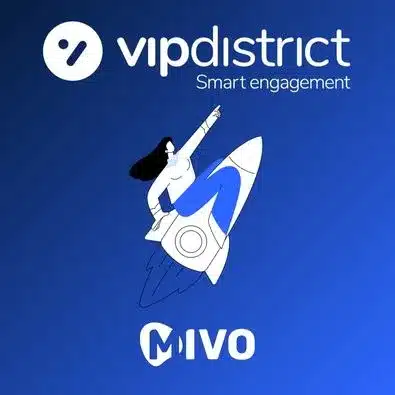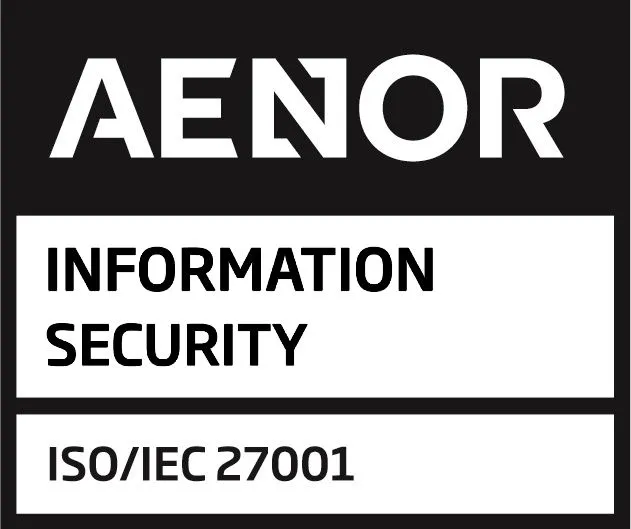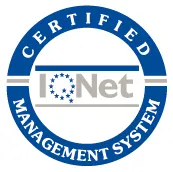
Large multinationals usually grab the headlines, but the economic reality of Europe is driven by small and medium-sized businesses. 99% of companies in Europe are SMEs, almost half (48%) of the total number of all persons employed in enterprises. However, many of them still face barriers in their digital transformation.
Table of Contents
In a context where competitiveness and efficiency are key, digitalisation is no longer an option, but a necessity. What are the main challenges for SMEs in this process and how can they overcome them with technology?
SME Digitalisation Challenges
Small and medium-sized businesses face unique challenges in their digitalisation process. While large corporations have large budgets and specialized technology teams, SMEs often must deal with resource and technical knowledge limitations. Digitalisation is not just a matter of implementing digital tools, but also changing business mindsets and the way operations are organized.
Main challenges include the following:
- Lack of features: limited budgets to adopt technology.
- Resistance to change: still an analogue business culture.
- Administrative load: excessive procedures and manual processes.
- Difficulty in attracting digital talent: need for specialized profiles.
- Regulatory compliance: adaptation to new regulations.
Despite these obstacles, digitalisation is an opportunity to increase efficiency, reduce costs and improve the competitiveness of SMEs in the global market.
SME Digitalisation benefits
Companies that commit to digitalisation can obtain significant advantages, including:
- Greater efficiency: Automation of repetitive tasks and time optimisation.
- Cost reduction: Fewer administrative errors and more agile processes.
- Better employee experience: Access to benefits and tools that increase job satisfaction.
- Scalability: Ability to adapt and grow according to business needs.
- Regulatory compliance: Security in document management and data protection.
SME Digitalisation key areas
Digitalisation transforms key areas of an SME, improving its efficiency and effectiveness by automating processes, reducing errors and optimizing decision-making. From accounting to human resources, integrating technology into these functions allows the business to scale with less effort and greater control. Below, we will explore what these strategic areas are, their impact on the business, and the main obstacles that companies face when implementing them, along with practical solutions to overcome them.
Accounting and billing
Impact of digitalisation:
- Increased efficiency: Automation of processes such as billing, expense control and financial reports. In addition to reducing manual management errors.
- Better decision making: Real-time data enables more accurate financial planning.
- Regulatory compliance: Avoid human errors and fines by complying with tax regulations.
The most common obstacles:
- Lack of budget: Perception that tools are expensive (and many of them are not).
- Resistance to change: Preference for manual methods.
- Lack of training: Difficulty using new platforms.
Solutions:
- There are free tools such as QuickBooks and Xero. In addition, there are other more complete and paid options, such as Holded and Sage, which automate the management of invoices, taxes and balances. Digital signature programmes, such as Signaturit, DocuSign and Signicat, streamline procedures with administrations and companies, reducing the use of paper.
Sales and CRM
Impact of digitalisation:
- Improvement of the client-company relationship: Personalization and tracking of interactions.
- Sales increase: Identification of cross-selling and upselling opportunities.
- Customer retention: Loyalty through more agile and personalised attention.
The most common obstacles:
- Lack of clarity on how to structure the necessary fields and processes.
- Sales team resistance in changing the way you record activity and data in new systems.
Solutions:
- Start with basic and accessible CRMs (Customer Relationship Management) like Oddo, HubSpot, Pipedrive, Monday.com and Zoho CRM.
- Implement in stages: first for lead management and then for loyalty.
- Show practical cases with real examples to demonstrate results.
Project management
Impact of digitalisation:
- Greater organisation and visibility: Centralise tasks, deadlines and managers on a single platform.
- Resource optimisation: It allows you to allocate time and budgets more efficiently.
- Best collaboration: Facilitates teamwork, especially in hybrid or remote environments.
- Reduction of errors and delays: Automate workflows and alerts to avoid unforeseen events.
- Analysis and continuous improvement: Provides key metrics to optimise future projects.
The most common obstacles:
- Resistance to change: Teams used to managing projects with spreadsheets or traditional methods.
- Lack of training: Difficulty using digital tools without adequate training.
- Implementation mess: Lack of a clear strategy when digitising processes.
- Too many non-integrated tools: Use of multiple platforms without synchronisation, leading to confusion.
- Cost perceived as high: Belief that digital solutions are expensive or only for large companies.
Solutions:
- Choose intuitive and scalable tools: Opt for platforms like Trello, Asana or Monday.com, which offer friendly interfaces and accessible plans for SMEs.
- Progressive training: Introduce new tools gradually, with tutorials and internal training sessions.
- Define a clear process: Establish a step-by-step implementation plan to avoid improvisation and disorder.
- Start with a pilot: Implement digitalisation in a small project before expanding it to the entire company.
Human Resources and People Management
Digitising human resources in an SME is not just about saving time, it is about managing talent better, less paperwork and more strategy. This frees HR from repetitive tasks and allows them to focus on attracting talent and improving the employee experience.
And the impact on the team is remarkable. Good software allows you to really track development, recognise achievement and improve performance. When employees feel that the company is committed to them, engagement increases, turnover decreases and the business grows.
Impact:
- Efficiency in administrative processes: Payroll automation, schedule control, and holiday tracking. Less time spent on manual and repeated processes, reducing errors and freeing up time for strategic tasks.
- Talent attraction and retention: Digital tools allow a better employee experience, with self-service where they can manage holidays, clock in, and access key information.
- Talent development: E-learning and performance monitoring platforms promote professional growth, and increase employee motivation and loyalty.
- Strong organisational culture: Facilitates internal communication and alignment of employees with company values.
Common Stoppers:
- Lack of budget: Belief that these tools are designed for large companies.
- Cultural resistance: Employees and managers prefer traditional processes.
- Lack of time: Perception that implementing new technologies consumes too much time.
Solutions:
- These are some accessible tools with solutions adapted to SMEs:
- Cezanne HR or Factorial: For management of absences, payrolls and signings.
- Udemy Business, Linkedin Learning or Coursera for Business: For affordable online training.
- Vip District: employee portal with a complete employee engagement solution, with modules for internal communication, incentives, recognition, and benefits.
- Phased implementation: Start with essential features, such as time tracking, and gradually scale up to more advanced tools.
- Training: Show employees and managers how the tools make their work easier and improve results.
- Change the narrative: Approach digitalisation as a solution that benefits HR teams, not as a threat to their roles.
Internal Communication
Efficient internal communication is key, especially as the SME grows, and digitalisation takes it to the next level. If an SME manages its internal communications manually and without centralisation, problems can quickly arise: lost messages, misunderstandings, duplicated information and late responses can become commonplace. This slows down decision-making, creates frustration within teams and reduces productivity. Without a digital platform to organise and streamline communication, the chaos grows with the business, threatening its efficiency. Digitising this process not only avoids these failures, but also strengthens collaboration and improves work agility.
Impact of digitalisation:
- Greater productivity: Facilitates teamwork, especially in hybrid or remote models.
- Strengthening corporate culture: Interactive and dynamic content facilitates the communication of corporate values and mission.
- Greater interaction between departments: Information silos are eliminated and collaboration between areas is strengthened.
- Greater clarity and alignment: All employees access the same information in real-time, avoiding misunderstandings.
- Reducing email overload: Tools such as corporate chats and collaborative platforms replace unnecessary emails.
- Better access to information: Documents, news and updates are centralised on digital platforms, accessible at any time, and from anywhere.
The most common obstacles:
- Technological complexity: Fear that employees do not understand the tools.
- Information overload: Use of multiple tools that do not communicate with each other, generating confusion and duplication of information.
- Resistance to change: Some employees may feel comfortable with traditional methods and see digitalisation as a complication rather than an improvement.
- Lack of participation: Employees are not involved in internal communication, reducing its effectiveness.
- Prioritisation of other areas: Many SMEs focus their investment on sales or production, leaving internal communication in the background.
- Access issues: If the chosen platform does not allow access to workers in the field or without a corporate email, the information may be limited.
Solutions:
- Personalize communication: Segment messages according to departments, levels of responsibility or specific interests, instead of sending mass information.
- Implement intuitive tools as Vip Connect, Microsoft Teams, the Google Workspace.
- Balance the amount of information: Create a clear communication strategy to avoid message overload, prioritise relevant information, and centralise information on a single platform.
- Encourage participation: Create feedback channels, surveys and discussion spaces where employees can express their opinions and contribute ideas.
- Use the platform to channel key information that cannot be shared by email such as protocols, holiday calendars, guides, etc.
- Measure effectiveness: Use metrics such as message opening and reading rates, feedback surveys or interaction analysis to improve the strategy.
- Provide access to all employees: Implement mobile apps or accessible platforms without the need for a corporate email (ideal for field workers).
Social benefits and rewards
Digitalisation brings advantages to SMEs that were previously only available to large companies. These include benefits and rewards. Discount and incentive platforms for employees make them easy to manage, boost motivation with gamified systems and expand the range of benefits.
Digitising benefits not only simplifies management but also improves the employee experience and strengthens the company’s value proposition, helping to attract and retain talent in a competitive work environment.
Impact of digitalisation:
- Greater access and customisation: Employees can manage their benefits from anywhere and adapt them to their needs.
- Time optimisation: Automate administrative processes, reducing the burden on HR.
- Increased satisfaction and loyalty: A well-managed benefits offer improves engagement, and reduces employee turnover.
- Improvement in employee experience: Greater transparency and ease of access to discounts, wellness plans and other incentives.
- Better control and measurement: It allows you to analyse which benefits have the greatest impact and optimise the offer to adjust it to employee preferences.
The most common obstacles:
- Ignorance of digital solutions: Many SMEs are unaware of platforms that facilitate profit management.
- High-cost perception: It is believed that digitalisation is only viable for large companies.
- Difficulty integrating with other tools: Problems connecting benefits management with payroll and other HRIS.
- Lack of clarity about which offers or options employees value most.
Solutions:
- Explore accessible platforms like Vip Incentives and Vip Savings.
- Inform and train the team: Explain to employees and HR how the platform works and the benefits of digitising this process.
- Implement scalable solutions: Start with a basic plan and expand it based on business needs and employee feedback.
Integration with HR systems and payroll: Use platforms compatible with people management software to avoid duplication of tasks.
A multi-service platform: the all-in-one solution
For many SMEs, managing multiple tools can be a challenge. Therefore, opting for platforms that integrate various functionalities can greatly simplify the digitisation process.
Vip District offers an all-in-one solution that covers:
- Social benefits and rewards for employees.
- employee portal and document management
- Internal communication tools.
With an integrated platform, SMEs can improve their employee experience, optimise resource management, and facilitate seamless adoption of digitalisation.
Digitalisation is no longer an option, but a necessity
A digitalised SME is more efficient, competitive and sustainable, and is what it needs to survive in an increasingly complex market. From accounting to project management, sales, internal communications, benefits and HR, each digitised area drives growth and improves the experience of both customers and employees. Although the obstacles are real—resistance to change, lack of knowledge or fear of investing—the solutions are within reach, with accessible tools and well-defined strategies. Strategically embracing digital transformation not only optimises processes, but also creates more agile, innovative and future-ready businesses.








